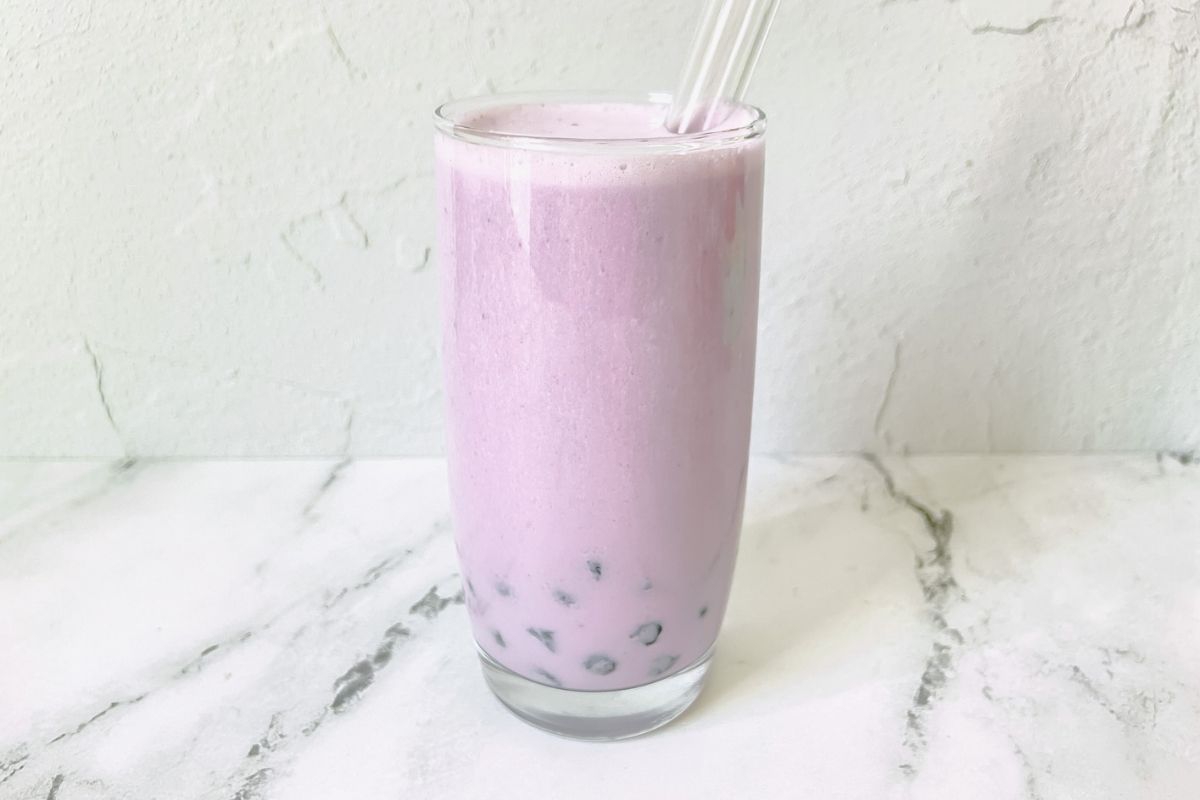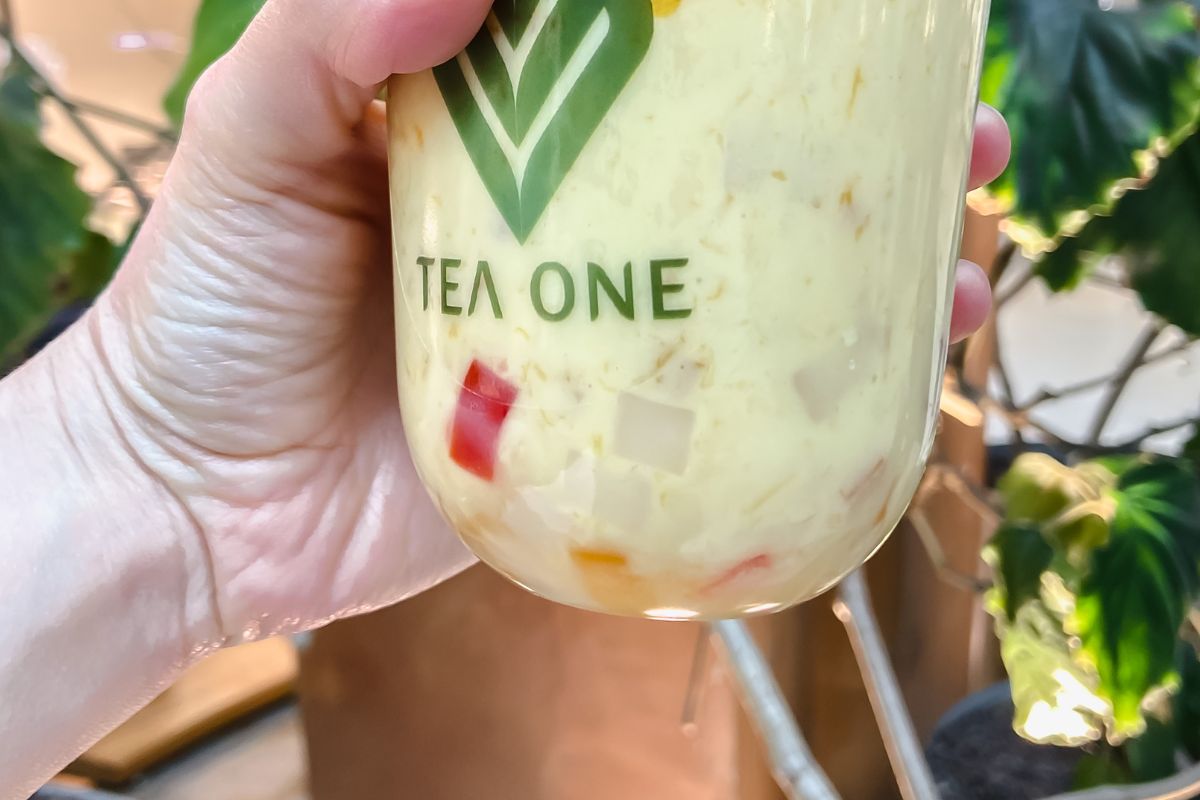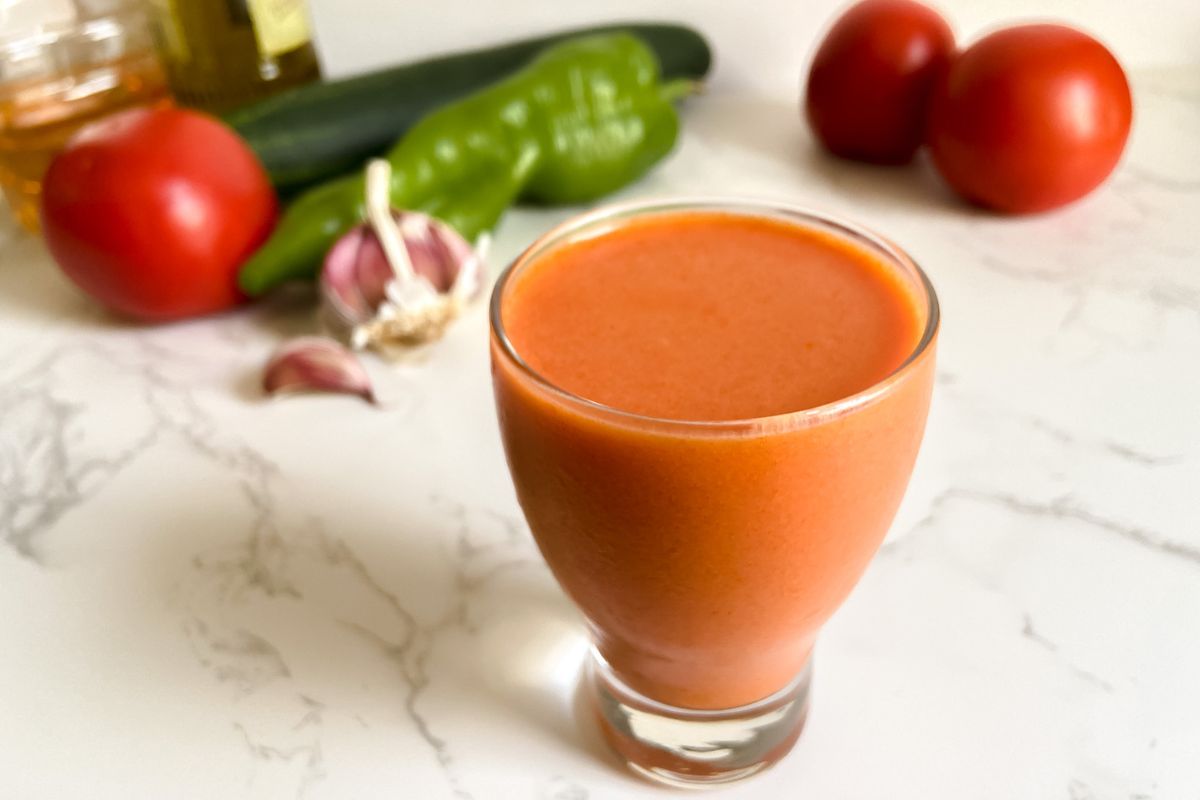Grass Jelly Milk Tea
How to make grass jelly tea at home

If you enjoy the look and feel of black tapioca pearls in your drinks but want something with fewer carbs, you should give grass jelly milk tea a try.
Black grass jelly is an alternative topping to boba that has very few calories and even some potential nutritional benefits.
In this blog post, I’ll tell you about my experience this Chinese jelly, including what it tastes like and how to make grass jelly bubble tea.
Get ready to explore this interesting and healthier option for yourself!
What Is Grass Jelly?

Grass jelly, also known as herbal jelly, soung sao or cincao, is a type of jelly-like dessert or beverage ingredient commonly found in Asian cuisine, particularly in Chinese and Southeast Asian countries.
It is made from a plant called Mesona chinensis by boiling its leaves and stems with some starch.
After boiling, the liquid is cooled down, which leads to the formation of the gelatinous texture of the jelly.
It is then cut into cubes or slivers, ready to be served with milk tea, fresh fruits, or sweetened beans.
Grass jelly has a dark, black color and a smooth, slightly chewy texture similar to gelatin.
It is often used in desserts, drinks, and toppings, and it has a slightly herbal flavor.
Grass jelly, when cut into thin or small pieces, is becoming a popular topping for bubble tea.
It adds visual appeal and contrasts nicely with milk tea while also providing a satisfying firm texture, all without the carb content found in tapioca pearls.
Many countries have their own variations of grass jelly dessert, typically served chilled or at room temperature.
It is often enjoyed alongside shaved ice, fruit salads, or sweetened with various types of syrup.
While there are also different types of green grass jelly available, it is the black variety that is commonly used in boba tea.
Outside of Asia, you can often find grass jelly in Asian grocery stores, available either in canned form or as a powder that can be boiled to make it yourself.
Related: How to make grass jelly from powder
Is Grass Jelly Healthy?

Is grass jelly good for you? Probably yes!
While research on the benefits of grass jelly is still limited, some studies suggest that it may offer health advantages and be a nutritious option.
Potential grass jelly benefits include:
- It’s rich in antioxidants, containing phytochemicals (natural plant compounds that provide health benefits)
- It may possess antimicrobial properties
- It may help control blood sugar and cholesterol levels
(Sources: Scientific and Academic Publishing, Researchgate, Science Direct)
Grass jelly is commonly believed to have a cooling effect on the body, which is often described as “yin” in traditional Chinese medicine.
This characteristic makes it a favored choice during hot weather to help beat the heat.
However, as Liveamstrong suggests, it may be prudent to wait for more research before relying on the health benefits of grass jelly.
In the meantime, it is recommended to enjoy it in moderation as part of a balanced diet.
Grass Jelly Nutritional Facts

According to Wikipedia, a 500-gram serving of unsweetened grass jelly typically contains approximately 2.5 grams of protein and around 15 grams of carbohydrates.
From these carbohydrates, about 0.5 grams come from dietary fiber.
The grass jelly can I purchased indicates that it contains 8.4 calories per 100 grams.
When it comes to the vitamins and minerals in grass jelly, I’ve found conflicting information.
Some websites say that it’s high in calcium and phosphorus, but I couldn’t find any studies to support these claims.
How Does Grass Jelly Taste Like? (My Personal Opinion)

The grass jelly taste is often described as having very mild, almost tasteless, with a slight bitterness.
In my experience, although its taste is indeed subtle, I detected distinct herbal notes, with hints of mint.
It reminded me of some medicinal herbal tinctures.
Please keep in mind that individual tastes can vary.
The following opinion is from someone who has limited experience with trying “exotic” foods (from a Western perspective).
I was born and raised in Western Europe, with Japanese roots, so I have been exposed to non-Western cuisines to some extent, but I would not consider myself an extremely adventurous eater.
Although the taste of grass jelly is not particularly overwhelming, I personally found its smell while cutting it quite unpleasant, reminding me of fish in a negative way.
Luckily, when combined with milk tea, the smell didn’t bother me as much.
However, it’s important to mention that I have only tried one brand of canned grass jelly so far.
Other brands might have a different taste and smell.
Unfortunately, in the area where I live, I could only find this particular brand of Chinese grass jelly.
On the other side, this brand of powder grass jelly had a neutral smell and I enjoyed it so much, it’s become my go-to brand.
In terms of texture, black grass jelly has a slightly chewy quality, resembling other varieties of jelly.
Given its mild taste, grass jelly complements sweet flavors well, making it an good match for the sweetness and creaminess of milk tea.
How to Prepare Grass Jelly Boba

You can easily replace tapioca pearls with grass jelly in any boba tea recipe.
This means making your own grass jelly drink is a breeze: simply cut the black jelly into small pieces or thin stripes so you can enjoy through a wide straw, and add them to your preferred beverage.
If you don’t have a boba straw, you can also use a spoon to enjoy the jelly.
Further down, you’ll find a list of super easy milk tea recipes that pair well with grass jelly.
Time needed: 10 minutes
How to make grass jelly bubble tea
- Cut jelly
Cut grass jelly in small pieces.
You can use black jelly from grass jelly can or grass jelly that you’ve prepared from powder.
- Add topping
Put the grass jelly in a glass.

- Add drink
Prepare your preferred drink and pour it over the jelly (which will likely float, unless you cover it with ice cubes).
In this picture I used homemade taro milk tea, but you can find more suggestions bellow.
Milk tea recipes that go well with grass jelly
Here are some delicious milk tea recipes that you can easily make at home.
And they all go well with grass jelly!

Grass Jelly Milk Tea
Equipment
- Boba straw Optional
Ingredients
- 2 Tbsp. Grass Jelly
- 1 Cup Milk Tea of Choice* Refer to the notes section below for some easy-to-follow recipes
Instructions
- Cut the grass jelly into small pieces.

- Add your milk tea of choice (check notes bellow for recipes)

- Enjoy with a wide straw (boba straw) or eat the grass jelly with a spoon.

Notes
- Taro Milk Tea (this is the one I used for the pictures in this recipe card)
- Classic Milk Tea
- Hokkaido Milk Tea
- Okinawa Milk Tea
- Oreo Milk Tea
I hope this post has helped you decide if adding grass jelly to your milk tea is something you’d enjoy.
Grass jelly is a cool alternative to tapioca pearls—it’s got this awesome jelly-like texture that adds a bit of fun to your bubble tea without piling on the calories and carbs.
While some brands might have a smell that’s not everyone’s cup of tea, the taste is pretty mild and goes really well with sweet milk tea.
What are your thoughts on adding grass jelly to your milk tea? Would you be willing to give it a shot?













Thank you very much for sharing your personal and sincere opinion.
I personally don’t like tapioca so it’s good to know this alternative.
Anyway as I love gelatin and Agar, I wonder if I could replace the boba for those.
Definitely! You can check my post about making rainbow jelly (it’s made from Agar and it makes a wonderful tea topping). And I will be posting about gelatin options too!